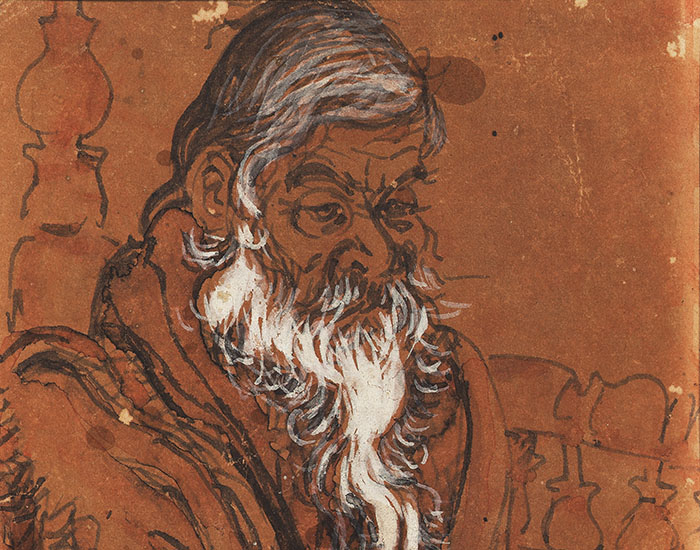Encyclopedia of Art > Articles
EB Havell

A British art historian, educator and administrator who worked in India in the late nineteenth and early twentieth century, Ernest Binfield Havell is known for pioneering a shift in art education from Western to Indian modes, motivating the emergence of the Bengal School of Art. He is also considered to be largely responsible for promoting Indian art in European art markets, encouraging Western art patrons to support Indian artists and artistic traditions.
Havell was born in Berkshire and graduated from the Royal College of Art, London. He studied art in Italy and worked in studios in Paris until 1884, when he travelled to India as the superintendent of the Madras School of Art (now the Government College of Fine Arts, Chennai). After his arrival, Havell conducted a series of surveys on art industries in the Madras Presidency for the colonial government. In 1896, Havell was appointed principal of the the Calcutta Art School (now the Government College of Art and Craft, Kolkata) and the attached art gallery — a role he held until 1905. Along with Abanindranath Tagore, Havell revised the curriculum to move away from traditional European arts pedagogy to focus on an Indian modernism that derived from Indian art forms, transforming the school from a fine art academy to a school of Indian design and crafts. He also replaced the European paintings and sculptures in the gallery with Asian art objects.
Havell’s reforms focused on three areas: advocating for the inclusion of traditional Indian art forms within the international canon; reimagining the British art education policy in India; and adapting traditional Indian art forms to Modern approaches to art. These reforms, particularly his focus on the traditional decorative arts, were also subject to considerable scrutiny, with critics accusing him of seemingly fostering an Orientalist, and by extension, imperialistic attitude towards India. Despite this, his reforms contributed significantly to the emergence of the Bengal School as well as the establishment of the Indian Society of Oriental Art in Calcutta in 1907.
Havell returned to England in 1906, where he actively worked towards mobilising support for Indian art and promoting a reformed British art education policy in India. He established the India Society in London in 1910 with support from prominent figures in the arts such as designer William Morris and AK Coomaraswamy. He also published several works on Indian art history influenced by his understanding of Indian philosophy and mythology, including Indian Sculpture and Painting (1908), The Ideals of Indian Art (1911) and Indian Architecture (1913).
Havell died in Oxford in 1934.
First Published:
Last Updated: July 26, 2023

